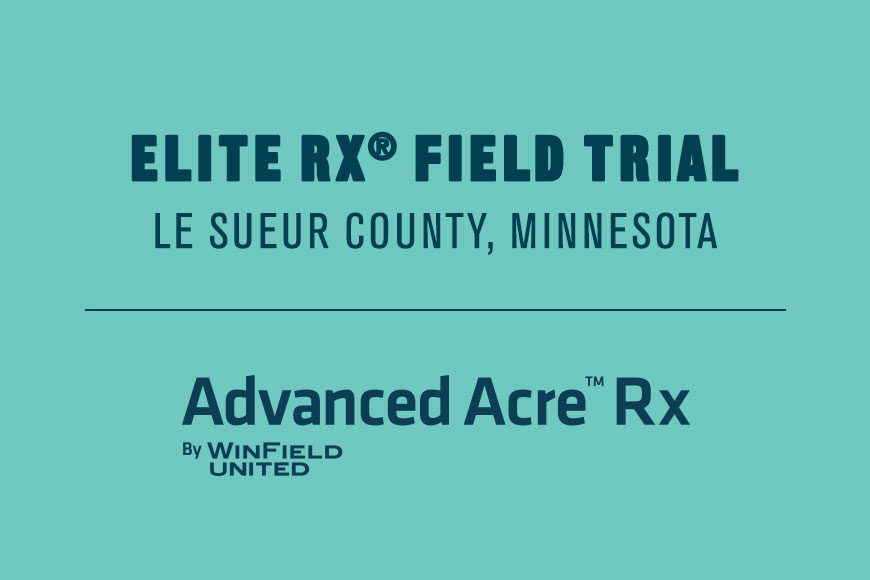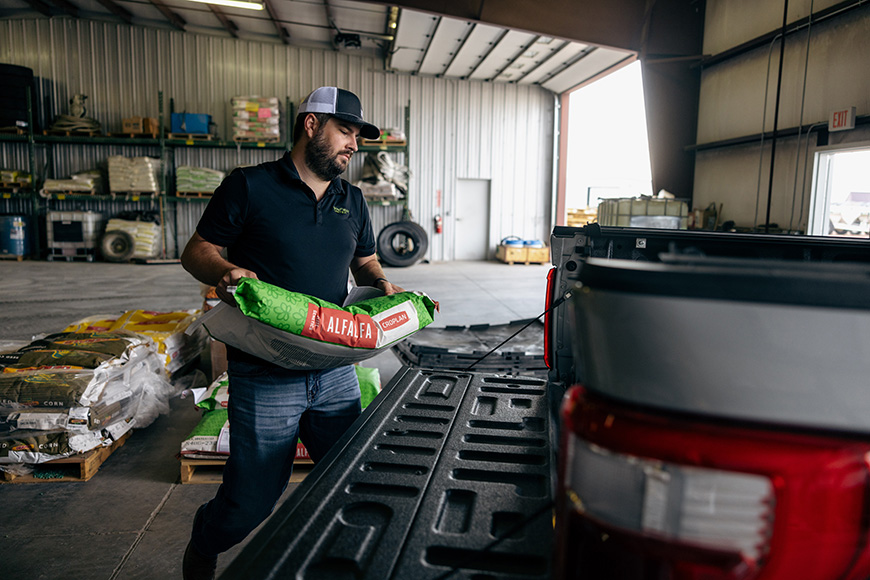Make Cover Crops Profitable

Farmers are looking to cover crops for their environmental and agronomic benefits as the demand for more sustainable food production gains momentum. The USDA reports that between 2012 and 2017, cover crop acres increased by 50%.1 Still, only 3.9% of all farmed acres were planted to cover crops in 2017.1 These numbers reveal that while interest in cover crops is growing, farmers still face barriers to adoption. Here are some things to consider to make cover crops profitable in your production system.
More roots in the soil also help build soil structure, and the added plant biomass boosts soil organic matter for more efficient nutrient cycling. Cover crops can also help suppress hard-to-control weeds and can be incorporated into a comprehensive strategy to limit herbicide-resistant weed development.
One of the most significant cover crop benefits is increased yield stability. As soil health and structure improve, fields have better drainage and air infiltration. Those two characteristics offer crop health benefits during extreme years when soil is too wet or too dry. That yield stability increases productivity over the long term and is one of the most obvious cover crop ROI metrics for growers.
Another barrier to adoption is that it can be difficult to calculate the return on investment of a cover crop, which may deter some farmers from taking the plunge. Soil health improvements won’t be immediate, so you should plan a long-term cover crop strategy to reap the full benefits.
Adding cover crops can be a steep learning curve, and you’ll likely have to change your current production practices to be successful. Some farmers may not want the extra hassle and added cost of planting a cover crop.
Choose the right cover crop
Every cover crop offers different benefits, so make sure you choose the right crop based on your goals. If you want to get maximum biomass established early, rye cover crops may be a good option. They provide extensive root systems to improve soil structure. If your goal is more nitrogen production or less compaction, then legumes, brassica species or turnips may be a better option.
Manage residue
Cover crops add extra residue, which you must plan for before you plant your cash crop. Consider investing in planting equipment designed for high-residue situations to maintain adequate seed-to-soil contact and establish a strong plant stand.
Plan for extra pests
Having year-round plant material in the field can harbor more insects and diseases, leading to more early-season seed and plant damage. Evaluate seed treatment options to protect your cash crop against common early-season pests.
Adjust your fertility plan
Cover crops help capture nutrients during fallow periods. However, it takes time for those nutrients to cycle back into the soil for plant uptake. The fertility recommendation in year one of cover cropping versus year four will probably be different, especially for nitrogen applications. As you consider the cropping system, make sure you consider short-term nitrogen immobilization with the additional residue, but also account for nitrogen credits as the system develops.
Terminate cover crops effectively
Cover crops can reduce yield potential if they’re not terminated effectively. If you don’t get a good kill, they will compete with the cash crop for nutrients, sunlight and water. And, because cover crops are already established, they have the upper hand on a newly planted crop. There are several ways to terminate a cover crop, so work with your trusted advisor to find an approach that fits your operational goals.
Pay attention to herbicide programs
If you’re planning to use a preemergence herbicide, getting good coverage can be tricky with a cover crop in the field. You also need to be aware of rotational restrictions on preemergence herbicides that may limit cover crop planting later in the season. Paying attention to herbicide programs is critical for managing cover crops successfully.
1 USDA. 2017 Census of agriculture highlights. Dec. 2020.
2 University of Illinois. Illinois study shows universally positive effect of cover crops on soil microbiome. Feb. 2020.
All photos are either the property of WinField United or used with permission.
© 2022 WinField United. Important: Before use always read and follow label instructions. Crop performance is dependent on several factors many of which are beyond the control of WinField United, including without limitation, soil type, pest pressures, agronomic practices and weather conditions. Growers are encouraged to consider data from multiple locations, over multiple years and to be mindful of how such agronomic conditions could impact results. WinField is a trademark of WinField United. All other trademarks are the property of their respective owners.
Cover Crop Benefits
The benefits of cover crops have been well studied and include reduced soil erosion, improved soil health and structure, increased nutrient cycling efficiency, enhanced weed control and added yield stability. When a cover crop is planted, it allows living roots in the soil throughout the growing season, improving microbial activity. A global research analysis by the University of Illinois shows that cover cropping can boost soil microbial abundance by 27%.2More roots in the soil also help build soil structure, and the added plant biomass boosts soil organic matter for more efficient nutrient cycling. Cover crops can also help suppress hard-to-control weeds and can be incorporated into a comprehensive strategy to limit herbicide-resistant weed development.
One of the most significant cover crop benefits is increased yield stability. As soil health and structure improve, fields have better drainage and air infiltration. Those two characteristics offer crop health benefits during extreme years when soil is too wet or too dry. That yield stability increases productivity over the long term and is one of the most obvious cover crop ROI metrics for growers.
Barriers to Cover Crop Adoption
While there are clear advantages to planting cover crops, several barriers limit more widespread adoption. One of the biggest challenges is the logistics of establishing cover crops. In northern growing areas, the season is shorter, and there may not be adequate time to get a cover crop in after the cash crop is harvested. You’ll also need the right equipment to plant into corn and soybean residue to get a good stand establishment.Another barrier to adoption is that it can be difficult to calculate the return on investment of a cover crop, which may deter some farmers from taking the plunge. Soil health improvements won’t be immediate, so you should plan a long-term cover crop strategy to reap the full benefits.
Adding cover crops can be a steep learning curve, and you’ll likely have to change your current production practices to be successful. Some farmers may not want the extra hassle and added cost of planting a cover crop.
Tips For Increasing the Profit Potential of Cover Crops
While there are challenges to overcome, cover crops can add value to your production plan with proper guidance and planning. Use these tips to help improve your chances of success.Choose the right cover crop
Every cover crop offers different benefits, so make sure you choose the right crop based on your goals. If you want to get maximum biomass established early, rye cover crops may be a good option. They provide extensive root systems to improve soil structure. If your goal is more nitrogen production or less compaction, then legumes, brassica species or turnips may be a better option.
Manage residue
Cover crops add extra residue, which you must plan for before you plant your cash crop. Consider investing in planting equipment designed for high-residue situations to maintain adequate seed-to-soil contact and establish a strong plant stand.
Plan for extra pests
Having year-round plant material in the field can harbor more insects and diseases, leading to more early-season seed and plant damage. Evaluate seed treatment options to protect your cash crop against common early-season pests.
Adjust your fertility plan
Cover crops help capture nutrients during fallow periods. However, it takes time for those nutrients to cycle back into the soil for plant uptake. The fertility recommendation in year one of cover cropping versus year four will probably be different, especially for nitrogen applications. As you consider the cropping system, make sure you consider short-term nitrogen immobilization with the additional residue, but also account for nitrogen credits as the system develops.
Terminate cover crops effectively
Cover crops can reduce yield potential if they’re not terminated effectively. If you don’t get a good kill, they will compete with the cash crop for nutrients, sunlight and water. And, because cover crops are already established, they have the upper hand on a newly planted crop. There are several ways to terminate a cover crop, so work with your trusted advisor to find an approach that fits your operational goals.
Pay attention to herbicide programs
If you’re planning to use a preemergence herbicide, getting good coverage can be tricky with a cover crop in the field. You also need to be aware of rotational restrictions on preemergence herbicides that may limit cover crop planting later in the season. Paying attention to herbicide programs is critical for managing cover crops successfully.
Build a Network
Establishing a profitable cover crop is possible with proper planning and guidance. Consider reaching out to farmers planting cover crops to get firsthand insights into what has worked well for them. Surround yourself with experts who can help you navigate questions as you implement cover crops into your production plan. Your local WinField® United retailer is an excellent resource and can help you map out a strategy that fits your cover cropping goals.1 USDA. 2017 Census of agriculture highlights. Dec. 2020.
2 University of Illinois. Illinois study shows universally positive effect of cover crops on soil microbiome. Feb. 2020.
All photos are either the property of WinField United or used with permission.
© 2022 WinField United. Important: Before use always read and follow label instructions. Crop performance is dependent on several factors many of which are beyond the control of WinField United, including without limitation, soil type, pest pressures, agronomic practices and weather conditions. Growers are encouraged to consider data from multiple locations, over multiple years and to be mindful of how such agronomic conditions could impact results. WinField is a trademark of WinField United. All other trademarks are the property of their respective owners.





